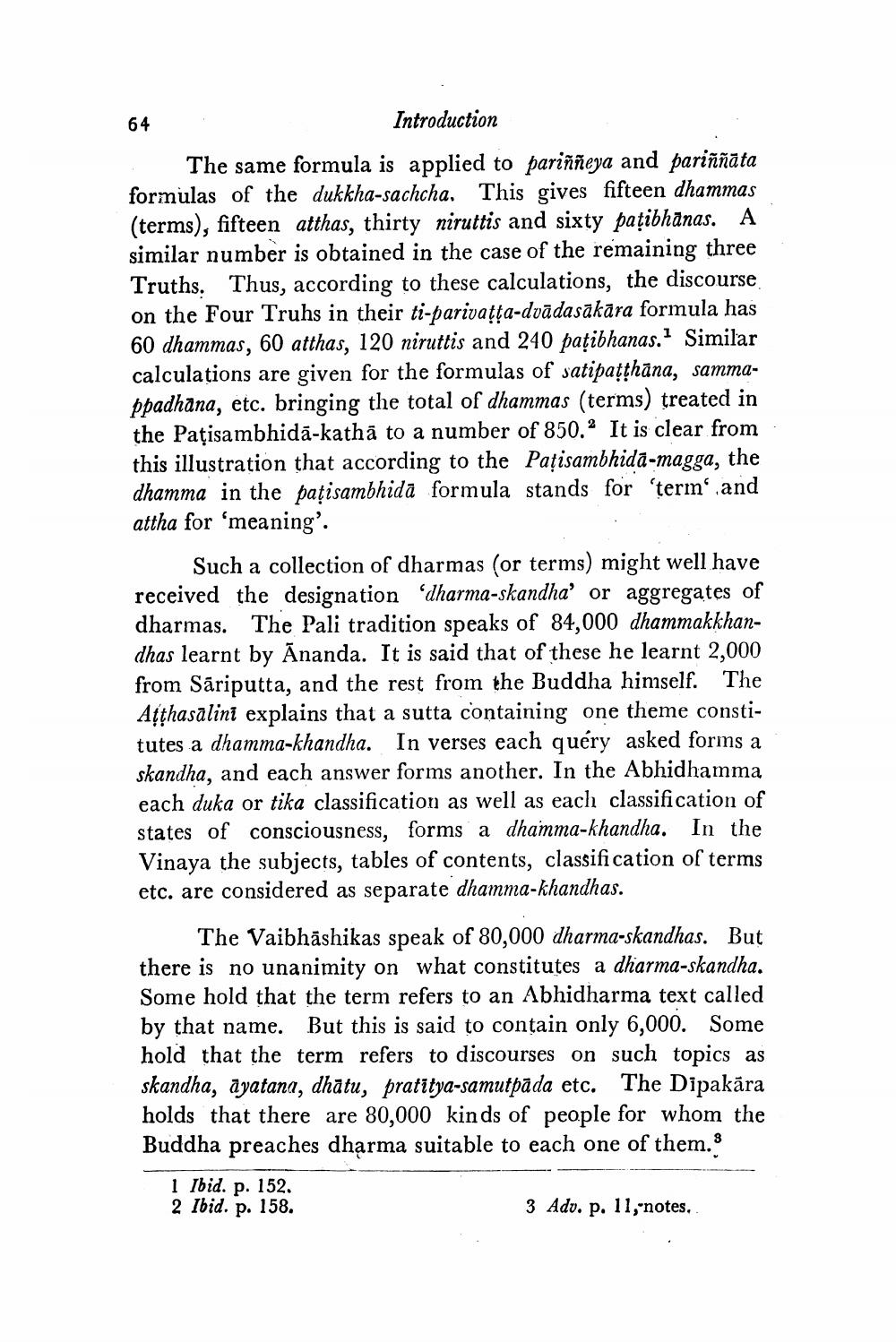________________ Introduction The same formula is applied to parinneya and parinnata formulas of the dukkha-sachcha. This gives fifteen dhammas (terms), fifteen atthas, thirty niruttis and sixty patibhanas. A similar number is obtained in the case of the remaining three Truths. Thus, according to these calculations, the discourse, on the Four Truhs in their ti-parivatta-dvadasakara formula has 60 dhammas, 60 atthas, 120 niruttis and 240 patibhanas." Similar calculations are given for the formulas of satipatthana, sammappadhana, etc. bringing the total of dhammas (terms) treated in the Patisambhida-katha to a number of 850.2 It is clear from this illustration that according to the Patisambhida-magga, the dhamma in the patisambhida formula stands for 'term' and attha for 'meaning'. Such a collection of dharmas (or terms) might well have received the designation dharma-skandha' or aggregates of dharmas. The Pali tradition speaks of 84,000 dhammakkhandhas learnt by Ananda. It is said that of these he learnt 2,000 from Sariputta, and the rest from the Buddha hinself. The Asphasalini explains that a sutta containing one theme constitutes a dhamma-khandha. In verses each query asked forms a skandha, and each answer forms another. In the Abhidhamma each duka or tika classification as well as each classification of states of consciousness, forms a dhamma-khandha. In the Vinaya the subjects, tables of contents, classification of terms etc. are considered as separate dhamma-khandhas. The Vaibhashikas speak of 80,000 dharma-skandhas. But there is no unanimity on what constitutes a dharma-skandha. Some hold that the term refers to an Abhidharma text called by that name. But this is said to contain only 6,000. Some hold that the term refers to discourses on such topics as skandha, ayatana, dhatu, pratitya-samutpada etc. The Dipakara holds that there are 80,000 kinds of people for whom the Buddha preaches dharma suitable to each one of them. 1 Ibid. p. 152. 2 Ibid. p. 158. 3 Ado. p. 11,-notes.




